MASH is often silent—and may advance faster for some people
MASH often has no symptoms. If it goes undetected and unmanaged for too long, it can lead to serious health issues. That’s why it’s important to know your liver status as soon as you can.
How do fatty liver disease and MASH progress?
Select each stage to learn more
Healthy liver
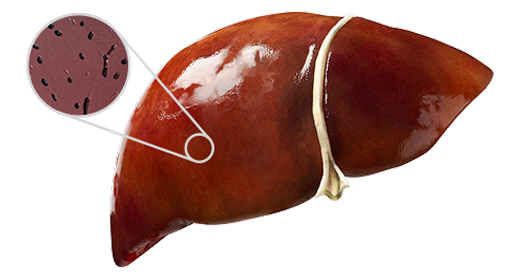
Healthy liver
A healthy liver may have a small amount of fat (less than 5% of the liver’s weight). It performs its main functions—such as processing the body’s food and waste—properly.
Fatty liver
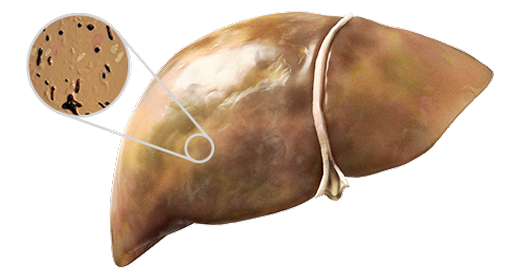
Fatty liver
The fat content in the liver has accumulated to more than 5%. Left unchecked, this fat buildup can damage the liver.
A test at this stage can reveal if liver damage is silently worsening.
MASH
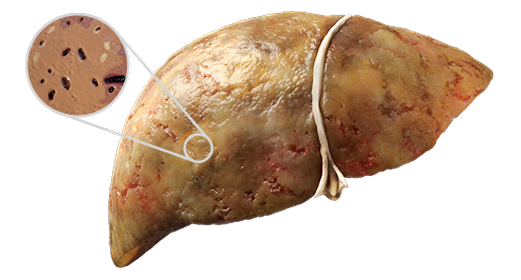
MASH
Fibrosis stage
Too much fat has built up in the liver, becoming toxic and triggering inflammation. This is damaging and could lead to scarring (also known as fibrosis). MASH without scarring is considered fibrosis stage F0.
You can still have scarring even if your liver enzymes are normal. Ask for a test to check for liver scarring.
MASH + scarring
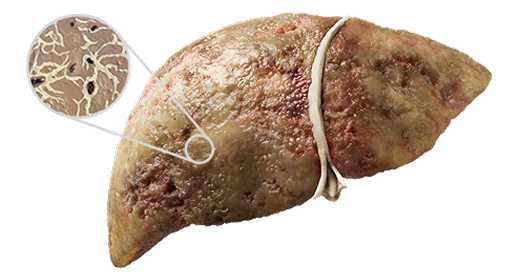
MASH + scarring
Fibrosis stage
Toxic fat buildup and chronic inflammation have caused more severe damage to the liver. MASH with scarring is a serious condition that can lead to cirrhosis and irreversible damage. A liver with mild scarring is considered fibrosis stage F1. Moderate to advanced scarring is stages F2-F3. Scarring is still reversible at these stages.
F3 is the last stage before cirrhosis. It is critical to talk to your liver specialist about a test for liver scarring and how to help manage MASH.
Cirrhosis
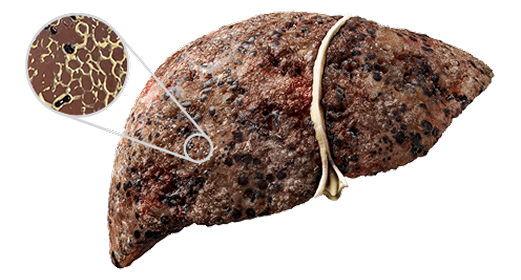
Cirrhosis
Fibrosis stage
The liver is severely scarred and permanently damaged. Cirrhosis may lead to liver failure, liver cancer, and reduced life expectancy. A liver with cirrhosis is considered stage F4, the most advanced stage of fibrosis.
The damage to your liver is irreversible. A transplant is the only option to possibly restore liver function.
The Threat of MASH
MASH can have life-threatening consequences
Cirrhosis

with MASH and advanced liver scarring will develop cirrhosis (severe liver scarring) in as little as 2 years.
Liver transplant

MASH is the leading cause of liver transplants in women, and the second leading cause for men in the United States.
Liver cancer

with MASH and cirrhosis will develop liver cancer within 4 years.
Shortened lifespan

If MASH remains unchecked, it can take years off your life.
TAKE OUR POLL
Move the slider to select a response.
How concerned are you that your fatty liver disease might actually be MASH?
Thank you for letting us know.
A test for liver scarring can give you important information about your liver status.
What causes fatty liver disease and MASH? It’s not the same for everyone
Doctors don’t know exactly why some people have fat buildup in their livers while others don’t. However, they do know genetics may play a role and that it is more common among some people, including those of Hispanic descent.
Health factors commonly associated with fatty liver disease and MASH
Obesity
Genetics
High blood pressure
Prediabetes or type 2 diabetes
High triglyceride and abnormal cholesterol levels
Ask to get tested like your liver depends on it.
A test for liver scarring is the only way to know if your fatty liver disease is actually MASH.



